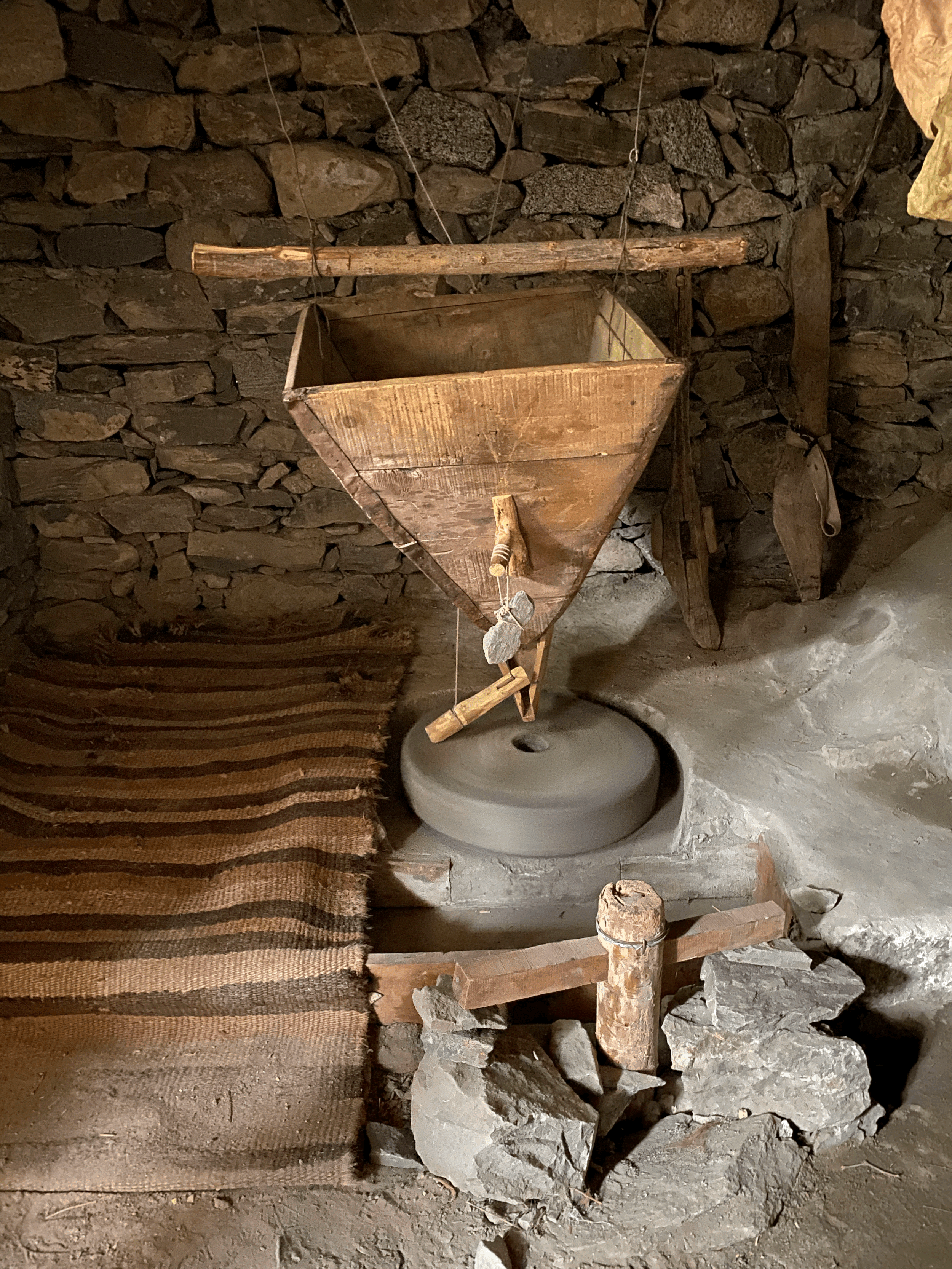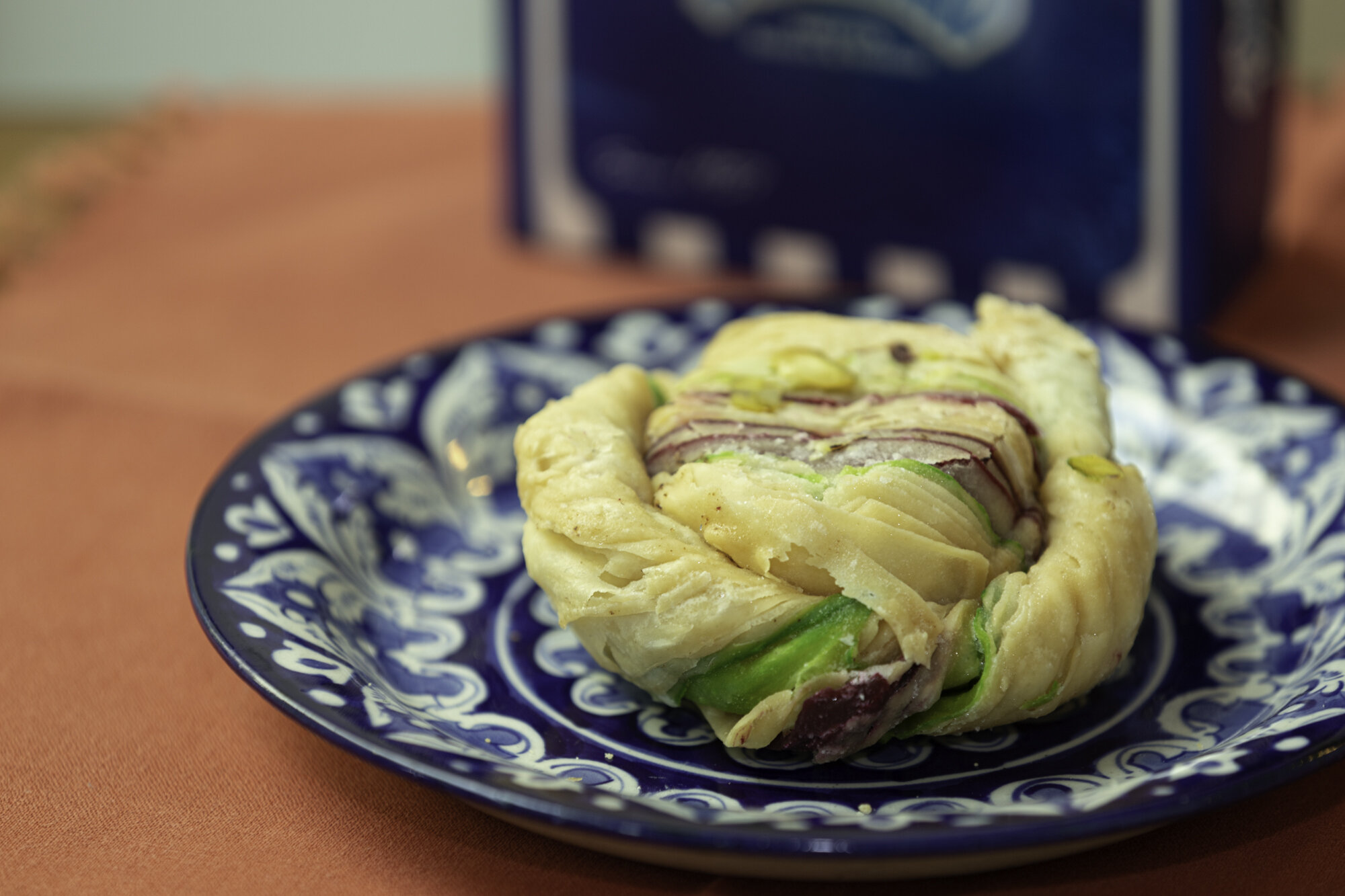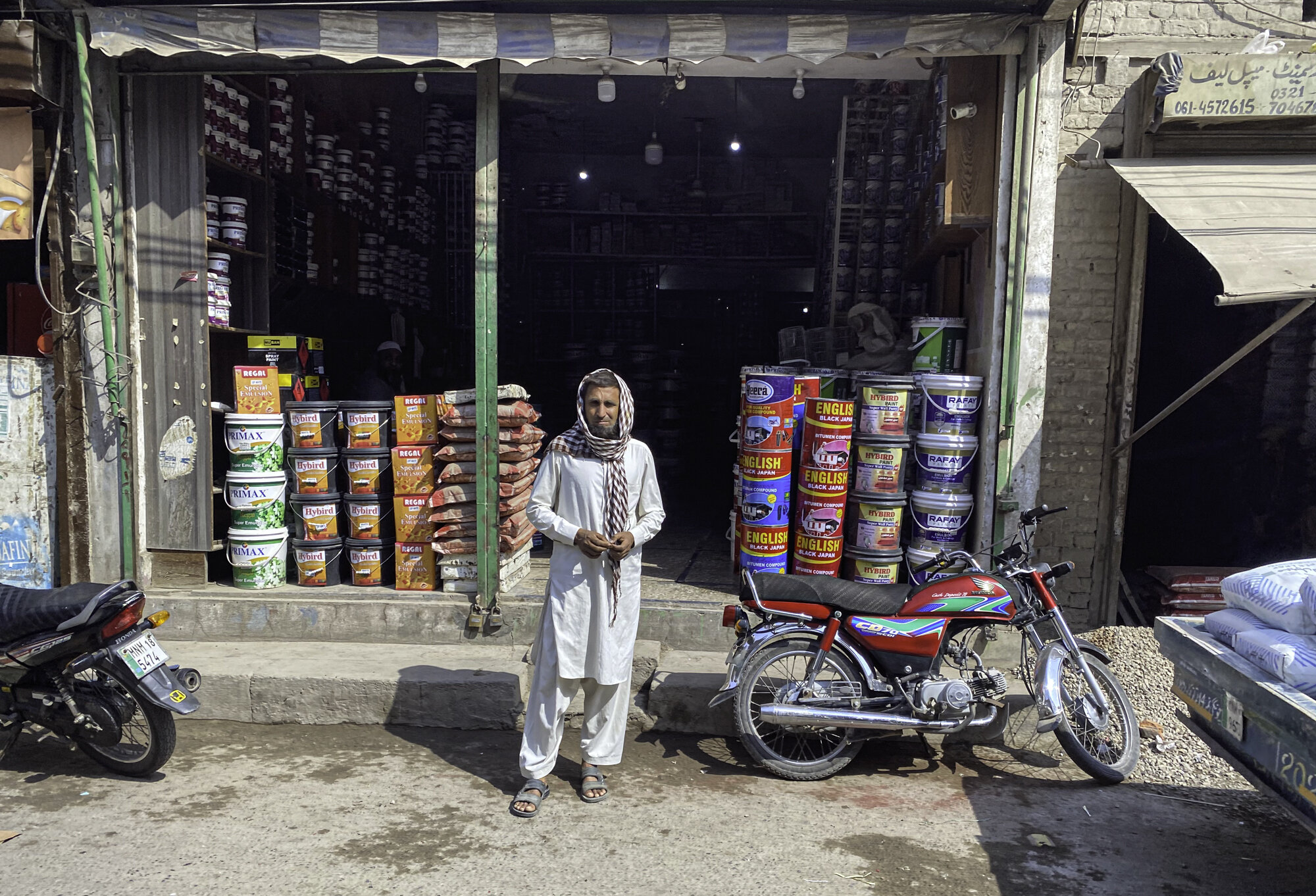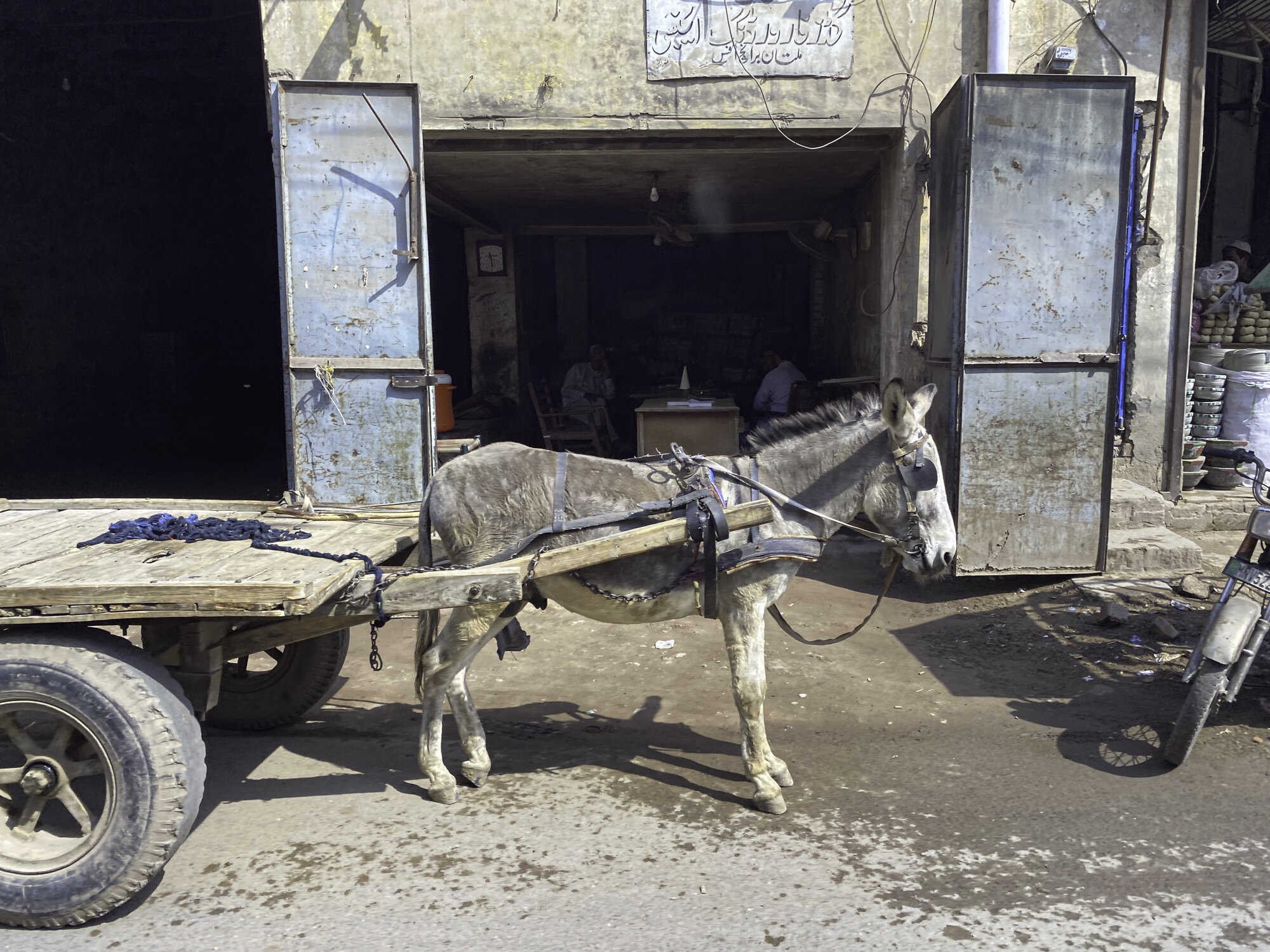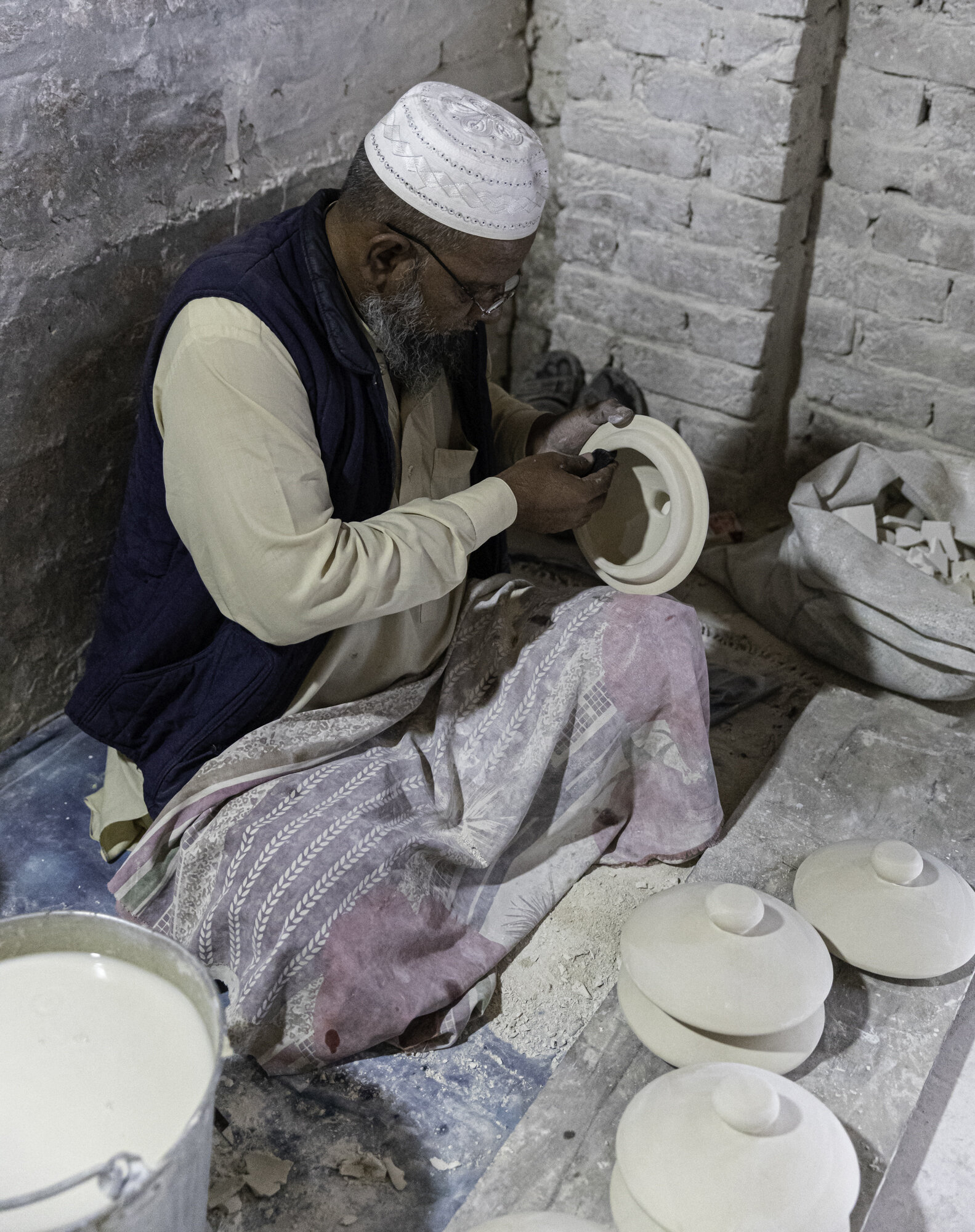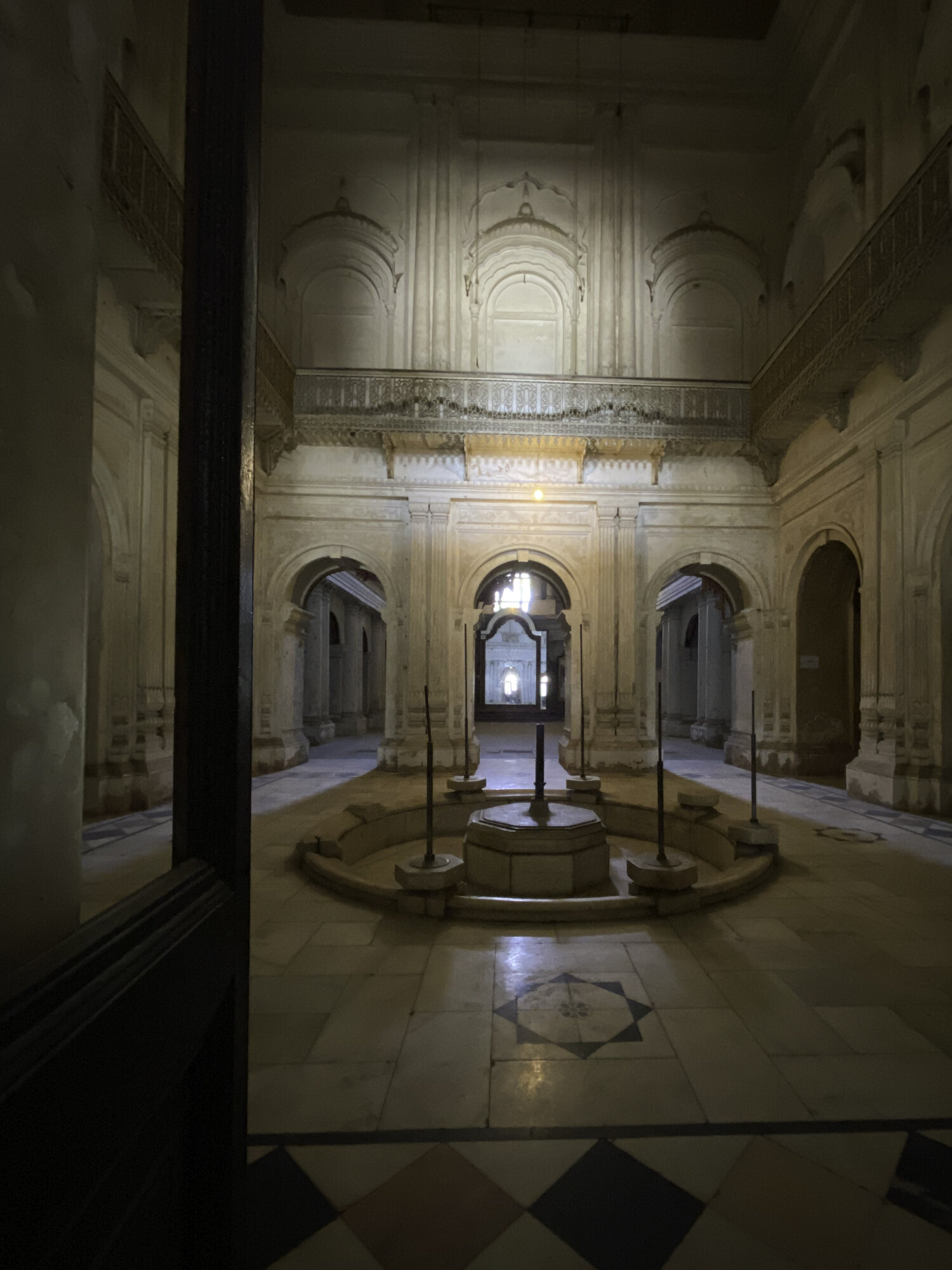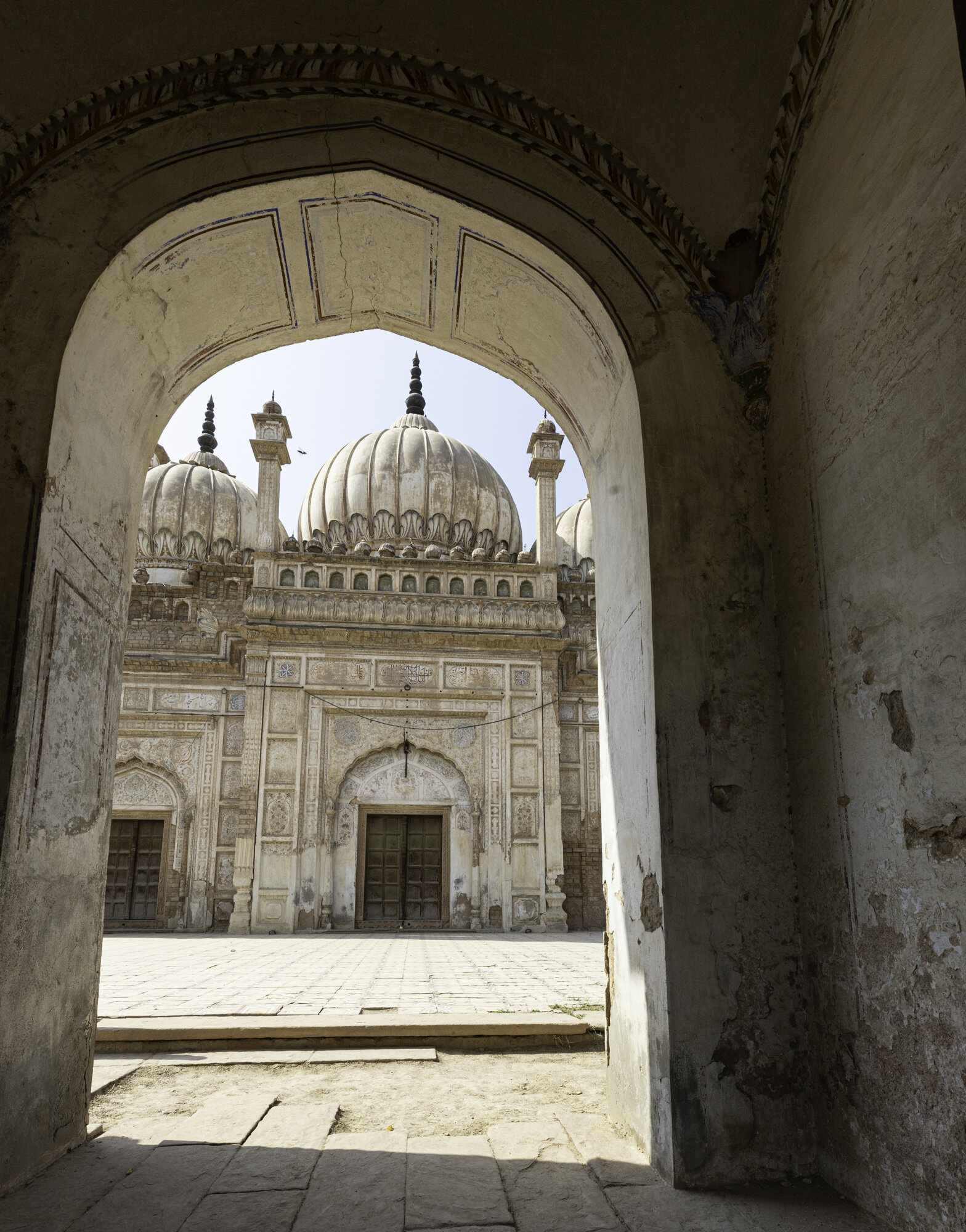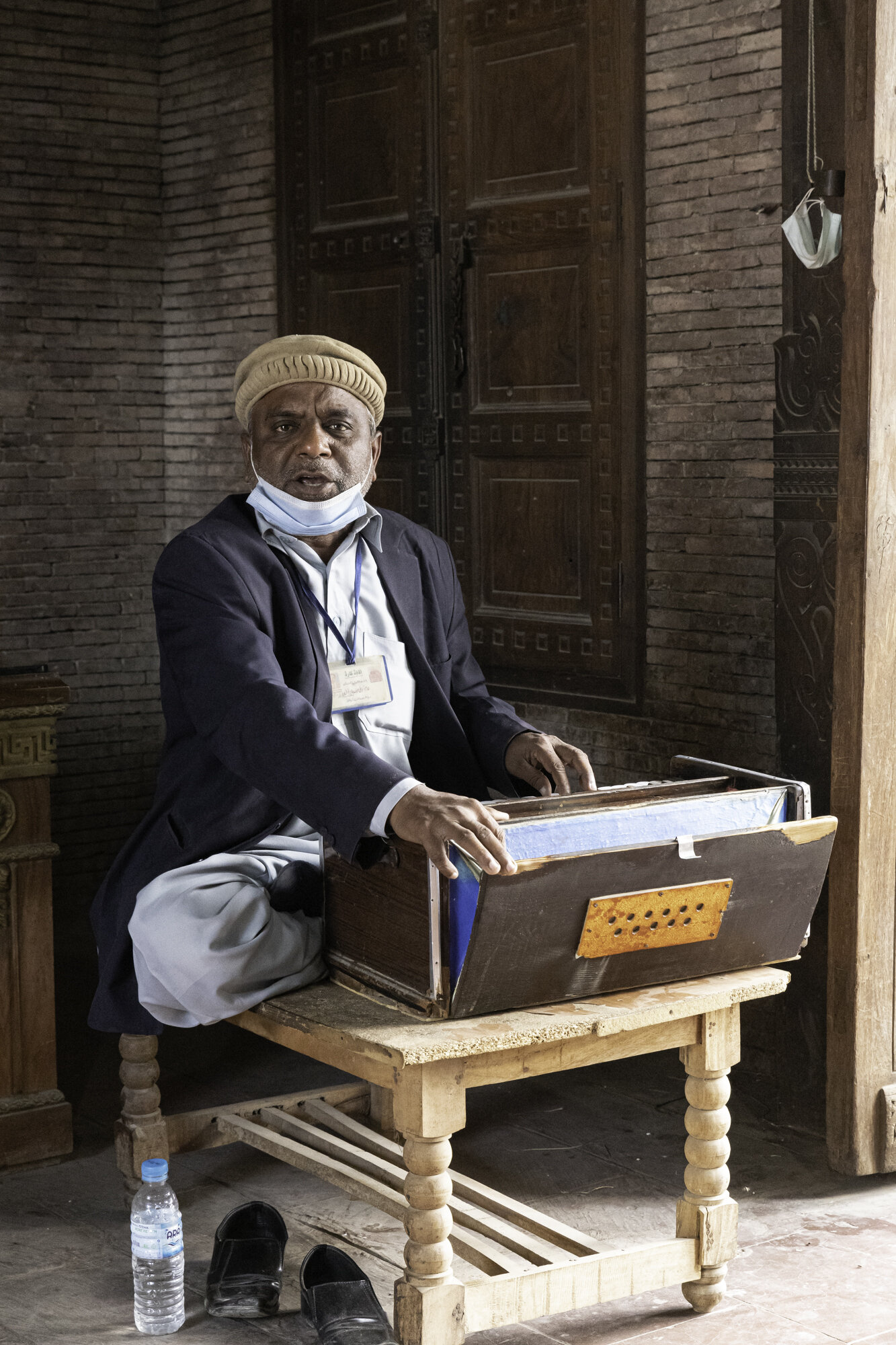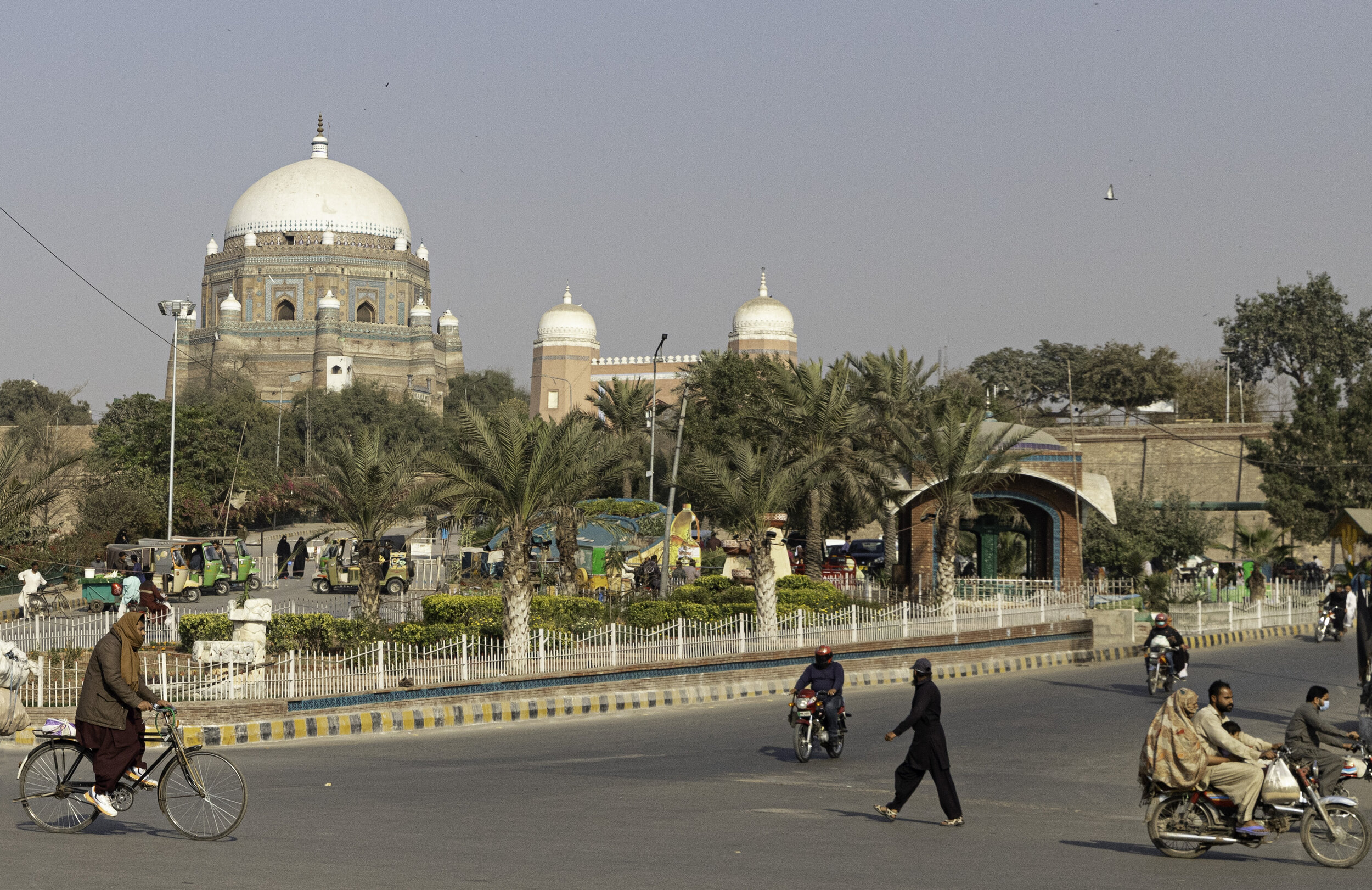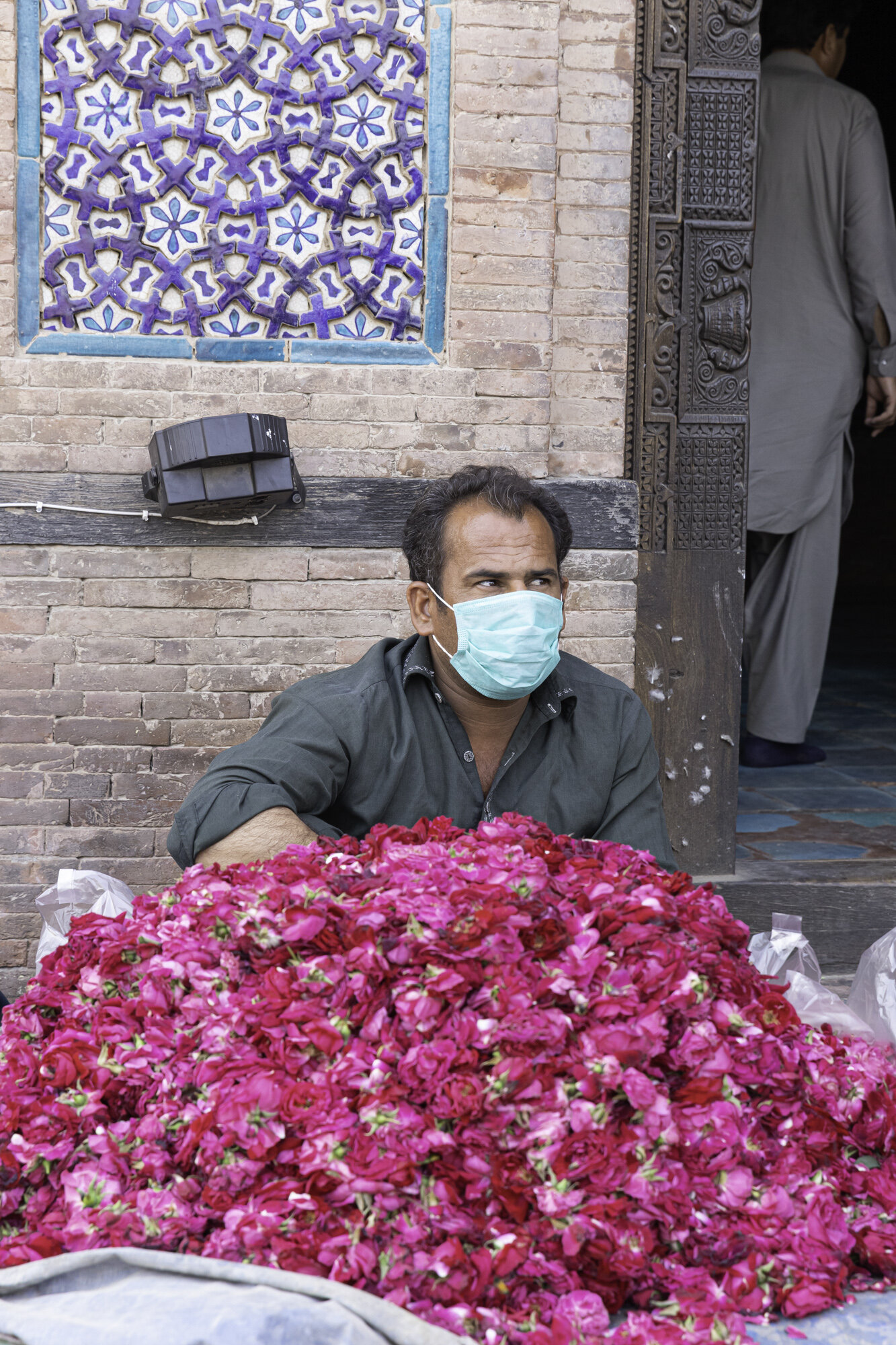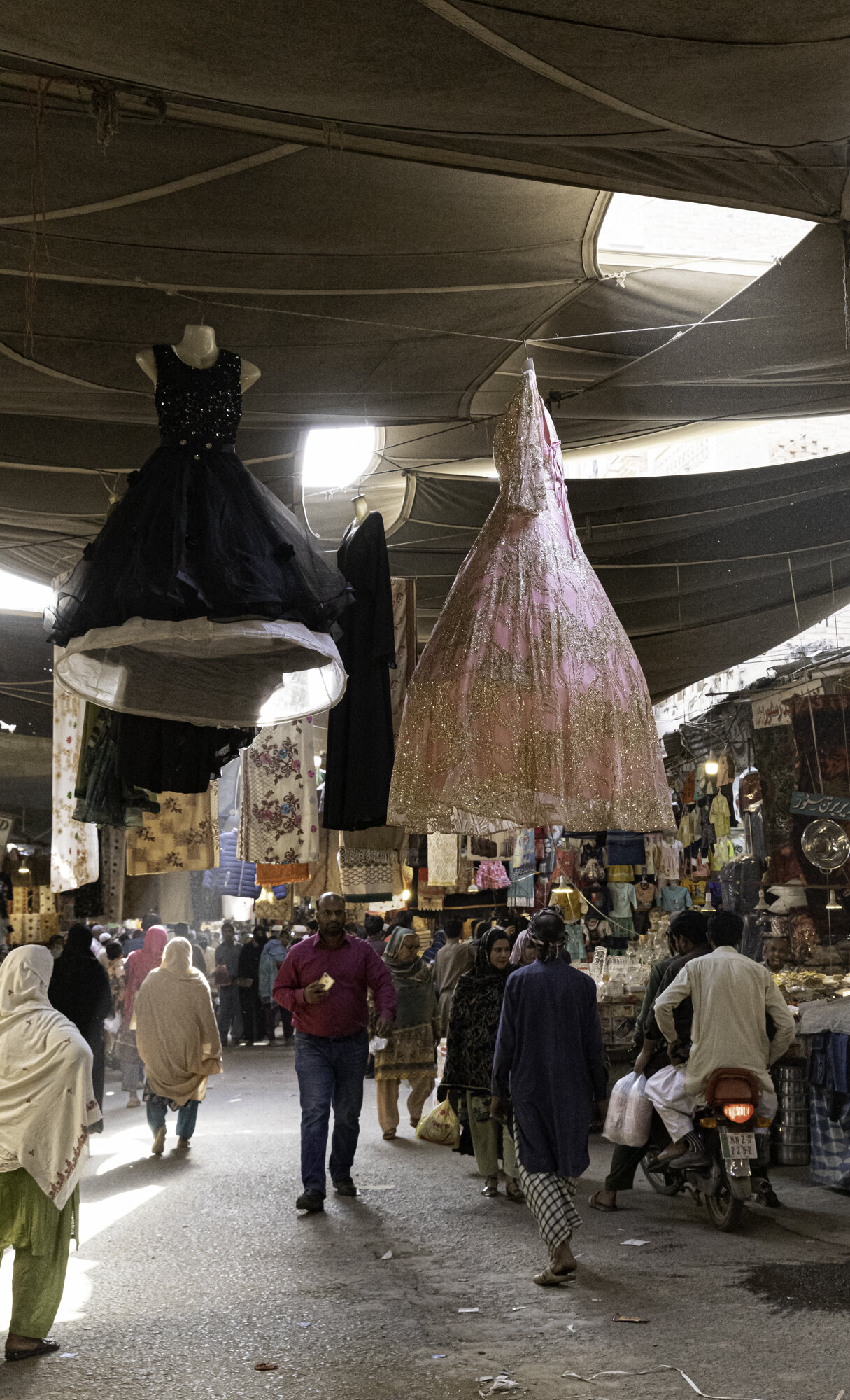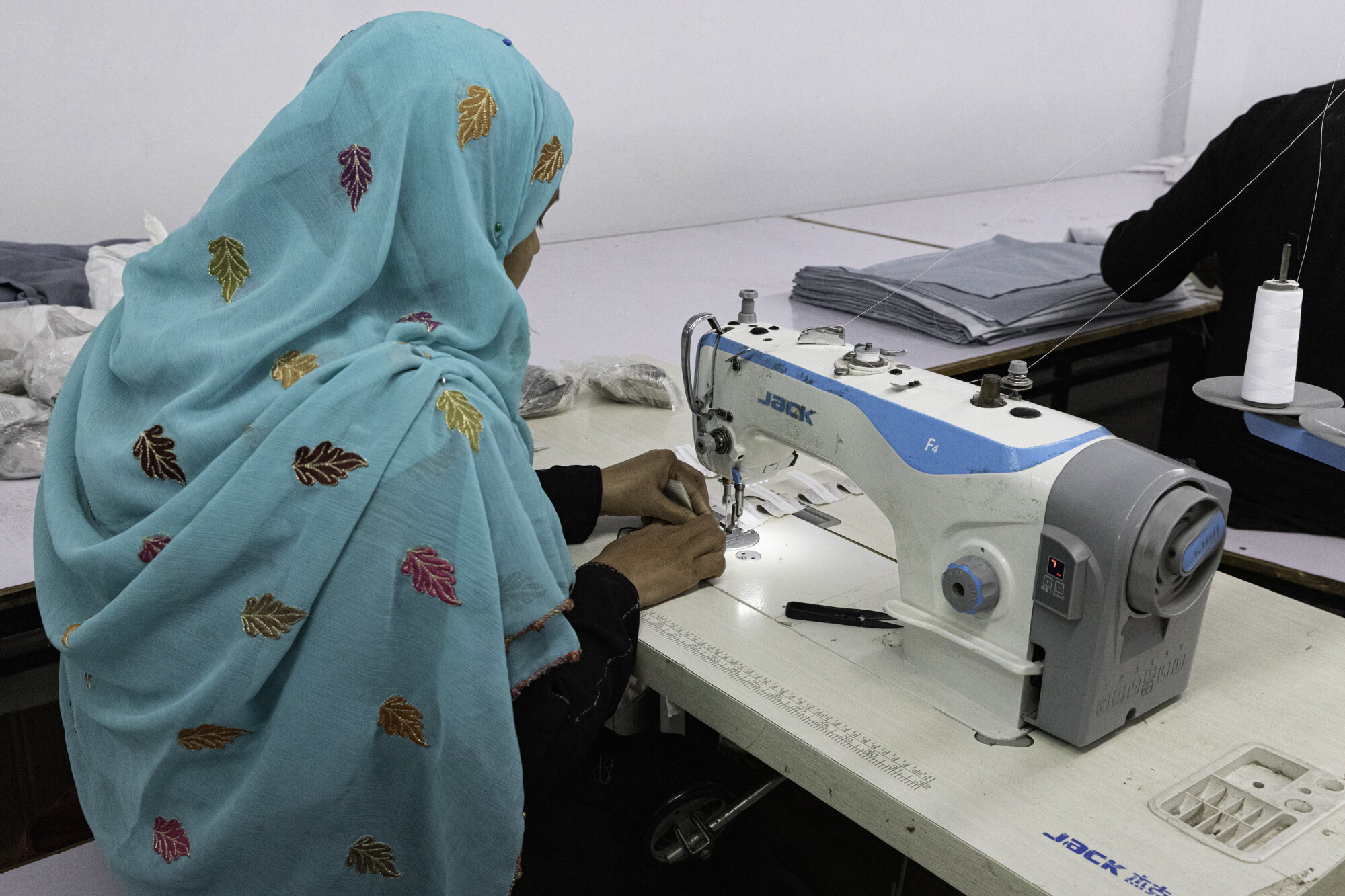Postcards from Pakistan
Postcard from Rakaposhi
Today we drive from Gilgit to Hunza, just over 100 kilometres along the Karakoram Highway. We are looking forward to seeing a number of mountains: Rakaposhi; Diran Peak; Hunza Peak; Ulter 1 and 2; and Dastgil Sar Peak.
This part of the Highway has been completed and is smooth but sometimes very narrow. There are a number of memorials along the highway to honour the workers who died building it. We stop at one memorial and meet the custodian who tells us about the workers who died building this stretch of the Highway. The inscription reads ‘In memory of their gallant men who preferred to make the Karakorams their permanent abode’ 1966-1972.
Our next stop is to see Rakaposhi, a mountain in the Karakoram Mountains about a two hour drive north of Gilgit. At 7,788m it is the 27th highest mountain in the world or the 12th highest mountain in Pakistan. Despite only coming in at 27th, well behind K2, this mountain is loved in Pakistan and we were keen to see it up close.
Rakaposhi means ‘snow covered’ locally but the mountain is also called Dumani ‘Mother of Mist’ or ‘Mother of Clouds’. We had an exceptionally clear day and there was only the faintest hint of a cloud around the summit. Ragaposhi is situated in the Nagar Valley and as we drove along the Karakoram Highway we kept seeing enticing views.
The place to get the best views of Rakaposhi is at the Rakaposhi Viewpoint in Ghulmet where we stopped for morning tea. According to the sign at the viewpoint we were at 1,950m and we could see the highest, unbroken slope on earth. The summit is almost 6 kilometres above us and only 11 kilometres away. It is the only mountain on earth that plummets directly, uninterrupted, for almost 6,000 metres from the summit to its base.
The Viewpoint has a small café and gift shop, the tea was very good, and I couldn’t resist buying a souvenir. As we were travelling during Ramadan we were the only ones there enjoying the spectacular scenery and peace and quiet.
Travelling along the Karakoram Highway from Gilgit to Hunza
Karakoram Highway Memorial
Memorial and cemetery custodian
Seating area next to memorial
We are driving alongside the Hunza River
Beautiful vistas keep opening up
The milky green of the Hunza River
Roadway on other side of the valley, tall Poplar trees along each ridge
Down below in the valley, terraced farms covering every available piece of land
View from our car - the road can be very narrow
At least you get to see Truck art details up close
Rakaposhi Viewpoint Cafe
My souvenir purchase - a traditional hat from Hunza - hand embroidered on cloth. Women wear them with a scarf over the top
Rakaposhi Viewpoint Cafe
Rakaposhi
A final road stop before continuing on to Hunza
My favourite view of Rakaposhi, terraced farms, flags flying in the wind
Postcard from the Kargah Buddha
The layers of history in Gilgit-Baltistan are fascinating. The area began as a number of small, independent states but the region has had many rulers and religious influences, from Chinese, Tibetan, to Mughal, from Buddhism to Islam. All have left lasting influences on art, culture, language and architecture.
Gilgit was an important trading stop on the Silk Road. Buddhist monks from China followed the Silk Road and it became a corridor for the teaching of Buddhism across the region. From the 3rd to the 11th century Gilgit was a major centre for Buddhism and many monasteries and stupas were built.
In 1931 a monastery and three stupas were found along with a large number of manuscripts that can be dated back to the 6th and 7th centuries. The archaeologist Aurel Stein announced the discovery of the manuscripts. They are made from birch bark and because of the dry mountain air they are in a remarkably good condition. In fact, they are the oldest surviving manuscripts in India. They cover a wide range of subjects including religion, folk tales and medicine. Most of the Gilgit manuscripts are in the Indian National Archives while a small number are in the British Library and the Karachi Museum.
Why am I telling you about the manuscripts? The manuscripts included a lot of new information on the region. Aurel Stein continued to make expeditions through the area reporting on findings of monuments and rock carvings. We had come to visit the largest rock carving, the Kargah Buddha.
Archeologists believe that the Kargah Buddha carving was completed in the 7th century. The Buddha can be found high up on the Kargah Nala cliff-face. The Buddha is 15m high and looks out over the Kargah and Shukogah Rivers that flow down to meet the Gilgit River.
There is also a legend about the carved figure, known locally as Yshani. Yshani was a man-eating giantess who terrorized the area. A holy man managed to pin the giantess to the cliff. The holy man declared that she would no longer bother them as long as he was alive. It is said that the holy man is buried in the foothills and so now the giantess can never be freed.
Now that we don’t have to worry about a man-eating giantess the area is a lovely picnic spot. Recent renovations have improved the road up to the Buddha and new stairs make it easy to climb up to get a great view of both the Buddha and the valley below.
View of the Buddha from across the valley
The new road that leads up to the Buddha
There is a small bridge to cross and an easy walk to the bottom of the stairs
The walkway takes you past rushing water
Edge of an old mill
The water was used to power the mill that still works today
The start of a steep walk
Stop, catch your breath, admire the view
Steep but stable stairs
The valley quickly becomes very narrow
Closest view. The holes around the Buddha were believed to be for a wooden structure to protect the carving. Or for pinning down a man-eating giantess!
Postcard from Gilgit
Gilgit-Baltistan covers an area of over 70,000 square kilometres and has an estimated population of nearly 2 million with over 200,000 people living in Gilgit, the capital of the territory. It is bordered by Afghanistan, China, Pakistan Administered Kashmir and Indian Administered Kashmir. Gilgit-Baltistan is an administered territory of Pakistan and constitutes the northern portion of the larger Kashmir region. Kashmir has been subject of a dispute between India and Pakistan since 1947.
To say that the region is mountainous is a massive understatement. It is home to three mountain ranges: Hindu Kush, Karakoram, and the Himalayas. It has five mountains above 8,000 metres: K2 (8611m, Karakoram, just behind Everest at 8850m); Nanga Parbat (8126m, Himalayas); Gasherbrum I (8068m, Karakoram); Broad Peak (8047m, Karakoram); Gasherbrum II (8035m, Karakoram). It also has more than fifty mountains above 7,000 metres.
The airport in Gilgit is surrounded by mountains and the approach is difficult. Poor weather or high winds mean many flights are cancelled. We are lucky as our flight from Islamabad to Gilgit leaves and takes just over an hour. I’m glad the weather is favourable as we seem to skim over mountain ranges as we fly north and the approach into Gilgit seems to be very close to the side of a mountain. I am also glad that we are not driving to Gilgit as the drive would take around sixteen hours due to poor roads.
We spend the afternoon looking around Gilgit. The bazaar is quiet as we are travelling during Ramadan. It is watermelon season and everywhere we go we find large barrows with neatly stacked melons, some cut to show off the ruby red inside. There are many shops and stalls selling dried fruit as the area is famous for walnuts and apricots. We visit two suspension bridges, one for cars and one for pedestrians. I’m not sure I would be brave enough to drive a car across the bridge as it is very narrow, the wood creaks and the bridge sways from side to side and up and down. Even with the swaying I manage to take many photos of Gilgit and the river.
Flying from Islamabad to Gilgit
The mountain ranges disappear into the distance
Flying into Gilgit
As you approach the airport you fly very close to the mountains on the left hand side of this photo
The small but welcoming Gilgit Airport
View of Gilgit from the Serena Hotel
Car suspension bridge
Gilgit River
Gilgit River
Just enough room for cars and pedestrians
Orange tarpaulins cover livestock
Pedestrian suspension bridge
The end of the pedestrian suspension bridge and the start of the bazaar
Gilgit Bazaar
Gilgit Bazaar
Selling jalebis (orange swirls - batter is fried and soaked in a sugar syrup) and samosas
Naan seller
Watermelon season
Traditional topi (hats), tasbih (prayer beads) and perfume
A thumbs up from a local
Another friendly local wandering along the Main Street
Dried fruit and nut seller
Life in Islamabad Eid-ul-Fitr
Box of traditional Pakistani sweets
Eid-ul-Fitr
Eid-ul-Fitr is the first day of the Islamic month of Shawwal. It marks the end of Ramadan, the month of fasting and prayer. Shawwal begins, and Ramadan ends, after a confirmed sighting of the new moon.
At Eid-ul-Fitr there are communal prayers and the giving of ‘zaka al-fitr’ or charity. It is also a festive time, to visit family and friends, give presents, to buy new clothes and prepare special meals.
Eid-ul-Fitr is also known as ‘Meethi Eid’ or sweet Eid in Pakistan. Celebrations have to include sweets. Traditional desserts are made like Sawaiyan and gift baskets of sweets are sent to friends and family.
There are two types of Sawaiyan – Sheer Khurma and Kimami Sawaiyan. Sheer Khurma is a milk pudding made with special vermicelli noodles that are cooked in thickened milk. Dates, fried lotus seeds, raisins, nuts and spices such as ‘elaichi’ or green cardamom are added to the milk. I have added a recipe for you to try.
To all who are celebrating, I want to wish you ‘Eid Mubarak’, a blessed Eid.
Sheer Khurma Recipe
Ingredients:
· Milk – 1 litre
· sweetened condensed milk – 200g
· Ghee – 2 tbsp
· Dates – 10 (dry)
· Green Cardamon pods – 3 – slightly crushed
· Vermicelli – I cup
· Sugar – ¼ cup
· Saffron – 1 pinch
· Nuts – ½ cup (you can use a mix and you can chop and/or keep whole)
· Raisins – ½ cup
Method:
1. Soak dates in warm water overnight. Remove seeds and chop finely.
2. Boil the dates in 1 cup of milk, the dates will absorb all the milk and become very soft.
3. Take 1 tbsp of milk and add the saffron threads.
4. Take the remaining milk and bring to a boil, reduce heat and cook and keep stirring for around 30 minutes or until thickened. Add the condensed milk.
5. In a separate pan add the ghee, cardamom and vermicelli and cook until a light golden brown.
6. Add the cooked vermicelli mix to the milk and cook for a further 10 minutes.
7. Add additional sugar to taste and cook until dissolved.
8. Add the saffron milk, half the dried fruit and softened dates. Stir to combine.
9. Garnish with remaining dried fruit and dates. Serve warm or cold.
Sheer Khurma
A gift basket we received with wonderful treats
My favourite sweet - Multani Sohan Halwa. See my blog on this traditional and delicious sweet.
Almond biscuits called Khatai - wonderful with chai
Another favourite of mine, Revri, made from sesame seeds.
Barfi, with silver leaf to make them extra special
Covered in sesame seeds and fried - yum!
Motichoor ke ladoo - made with almonds, ghee and sugar
All sorts of different pastries are also given as gifts.
Postcard from Multan’s Walled City and Historic Gates
Haram Gate
Multan was once a fortified city with a wall and six gates. What remains of the wall is now in the inner part of the city centre. Entrance to the walled city was by six, imposing gates: Lohari; Bohar; Pak; Dehli; Haram and Dolat. Only three gates remain: Dehli; Bohar and Haram. The original wall and gates were built in 1756 however during the British siege of Multan in 1849 much was destroyed. The British rebuilt the Dehli Gate and some restoration work on the other gates has occurred.
The remaining gates all have interesting histories. The Dehli Gate was the gate that Mughal kings would enter the city. The gate faces Dehli, India. Bohar Gate faced the Ravi River that had Bohar trees along its banks. Food and supplies would be brought along the river and enter the city via this gate. The river has now changed course. Haram Gate was next to the women’s quarter, or harem, of Saint Musa Pak Shaheed.
Shops and people crowd up against the remaining parts of the wall and gates. Inside the walled city are narrow streets with some wooden houses with intricately carved doors, windows and balconies. There was no time on this trip to explore the old town, yet another reason to return.
Haram Gate
Dehli Gate
Dehli Gate
Bohar Gate
Part of the old wall
Old wall and carrot juice
Old wall and wedding carriage
Old wall and donkey
Multani Kaashigari
After travelling to many parts of Multan, Bahawalpur and the Cholistan Desert and seeing the beautiful Multani blue and white glazed tiles I was interested in learning more about this art. The blue and white pottery is known locally as Kaashigari.
The word Kaashigari is thought to have come from either Kashan in Persia or Kashgar in China. There are certainly Persian influences in the designs and Chinese influences in the predominant use of blue and white. The art form has developed with unique Multan designs and overtime the number of colours used has increased to include bright red, yellow and orange.
Kaashigari used to combine both red and white clay from local riverbeds however water pollution has meant a change to using just white clay from different parts of Pakistan. Added to the clay is feldspar and quartz. Kilns have replaced wood and dung fires.
We visited both the TEVTA (Technical Education and Vocational Training Authority) Institute of Blue Pottery Development, a government run institute, and the Ustad Alam Institute of Blue Pottery. The TEVTA Institute runs a 6 month course and trains around 40 students a year. The TEVTA institute trains both men and women, women mainly working from home. We were also given a tour of the Ustad Alam Institute of Blue Pottery. The Institute is run by Ustad Muhammad Alam, an acclaimed Pakistani artist who has won numerous awards.
It was fascinating to see the process from start to finish. The mixing of the clay, clay being poured into moulds, the hand painting through to glazing and firing. At both institutes I was able to watch the artists painting directly on to the pots with no outline or pattern to follow. The rooms were quiet, light coming through side windows, their brushes moving quickly, no mistakes made.
And yes, I bought a lot of pottery to bring home with me…….
Clay
Barrels for mixing the clay
Long wooden shelves with iItems waiting to be painted
After the item comes out of the mould the excess clay is trimmed away
Kiln
Preparation of a mould
Metal mould supports
Mould being filled with clay
Glaze being mixed
Hand dipping items into the glaze
Postcard from Abbasi Royal Graveyard
Our final stop for the day was the Abbasi Royal Graveyard. It was a short but dusty drive to the graveyard where we waited for the caretaker to come and open the gate. A large key was extracted from a pocket of the caretaker’s shalwar kemeez and the door was slowly opened. There are several tombs here, individual tombs for wives and relatives and the main Nawab tomb. The Nawab tomb contains the graves of all 12 Nawabs that ruled Bahawalpur. The outside is red brick with traditional Multani blue and white glazed tiles. Inside the tomb you can see the individual tombs respectfully covered in white cloth. The interior is highly decorated with frescoes, elaborate wood doors and tile and mirror work. We started our visit to the Cholistan Desert with the fort and man’s attempt to control his environment, we then visited the mosque and contemplated life today and ended at the graveyard and a reminder that one day we will all return to dust.
Postcard from Abbasi Mosque, Cholistan Desert
From the top of one of the bastions of Derawar Fort you can see the Mosque’s three white domes shining through the afternoon haze. The Mosque was built in 1849 by Nawab Bahawal Khan Abbasi. Covered in white marble the mosque is symmetrical with minarets and decorative arches and Islamic calligraphy. The design was supposed to have been inspired by either the Shah Jahan’s Moti (Pearl) Mosque in Agra or the Moti Mosque at the Red Fort in Dehli.
We had time for a quick stop to see the mosque before continuing our journey. We took off our shoes and I covered my head. Inside the courtyard it was hot in the afternoon sun and very quiet. Time for a moment of quiet contemplation.
Postcard from Derawar Fort, Cholistan Desert - a fortress of truly towering proportions
We leave Bahawalpur behind and travel another 100 kilometres into the Cholistan Desert. Derawar Fort rises up out of the desert and the colour of the surrounding sand is matched by the millions of small, narrow bricks that make up the fort.
40 bastions standing 30 metres tall, 1500 metres of wall make up the square shape of the fort. Each bastion is decorated with intricate brick work patterns. As you get closer you can’t believe the scale of the building, seemingly built in the middle of nowhere.
When the Fort was built in the 9th century it stood next to the Hakra River and was a defensive point to protect valuable water resources on caravan and pilgrim routes across the desert. It was built for Rai Jajja Bhati, a Hindu king from Jaisalmer, India. The fort changed hands many times and in the 18th century it became the property of the Nawabs of Bahawalpur, who rebuilt it in 1732.
Inside the Fort are many buildings, most in a poor state of repair. The Bahawalpur Department of Archaeology is working to restore parts of the fort but more work and funds are required. We visited one bastion where the structure has been repaired and new frescoes painted but it is a shame that the original frescoes are not protected.
The fort is currently on the tentative list of sites to be included on the UNESCO World Heritage List. UNESCO defines cultural and natural heritages as “irreplaceable sources of life and inspiration…our touchstones, our points of reference, our identity”. Derawar Fort certainly meets that definition.
Gateway into the fort
Curved, steep driveway from main gate - excellent defences
Panorama inside the fort
Bastion currently under restoration
Walkway up to see the bastion restoration work - no railing, long drop down - don’t think I’d like to work on the scaffolding
Restoration inside almost complete
Ceiling detail
Frescoes - before and after
Wall detail
View from the bastion - where the irrigation stops the desert immediately starts
Inside the fort - years of restoration work required
Inside the fort
Inside the fort
Under the dust a hidden treasure
Parts of the buildings look beyond repair
Painted ceiling
Bastion brickwork
Time to leave to go to our next stop - decided against the camel to get there
Cars are a much better option against the heat and dust
Postcard from Sadiq Garh Palace, Bahawalpur - neglected but not forgotten
After visiting the centre of Bahawalpur, we took a small detour to visit Sadiq Garh Palace. We were just going to stop and have a look on the outside before continuing on to see Derawar Fort. But one wrong turn into a private driveway led us to meeting the Nawab and his family and an invitation to visit inside the Palace and to stay for tea. I am constantly amazed at how generous and hospitable Pakistanis are to people they don’t know.
The Palace was built for Nawab Sadiq Muhammad Khan (IV) in 1882 and took ten years to build. Italian architects designed the building that has both European and South Asian influences. The Palace has three floors and sits in a large, symmetrical garden with a mosque to one side.
The Palace has been left empty now for years. Glass is broken in the ornate windows, tiles are missing, wooden floors are rotting away. There is little left of the interior furnishings, three ornate mirrors remain in a downstairs room, too heavy to move or steal.
Apparently there are a large number of heirs to the property and there is no agreement over what to do with the Palace. Suggestions include keeping it in the family, handing it over to the local Government to turn into a museum or selling it to become an hotel.
It is a beautiful building and we can only hope a decision is made soon before the building is beyond restoration and we lose a valuable part of Bahawalpur’s history.
The family Mosque
Postcard from Bahawalpur Central Library
We visited the Bahawalpur Central Library and my knowledge on architectural styles was broadened again. The Library was built during the British Raj and you can easily see the Victorian influence. It is built in a Neo-Gothic-Victorian style, also known as Gothic Revival. The library includes all the major decorative items such as moulded frames for windows, arches and lancet windows (tall with a pointed arch at the top).
Construction started in 1927 but took seven years to finish due to lack of funds. I was given a wonderful tour of the library including the rare book section and the library’s amazing collection of early editions of both Dawn and the Pakistan Times, two Pakistani newspapers established by Mohammad Ali Jinnah, the founder of Pakistan. I could have spent a lot of time sitting and reading through the newspapers. I opened the Pakistan Times on Saturday April 26, 1947. One headline was “Viceroy determined to play fair on Frontier issue”. The Viceroy was Lord Mountbatten.
The central reading room is beautifully proportioned with light streaming in. The top gallery has an Islamic art collection. Next to the main library is the Children and Ladies Section that includes a room of braille books. In the children’s section there was a large book on major cities around the world. The book was opened to Sydney in honour of our visit. Nice to think that the next day someone might sit and read about Sydney, Australia, while living in Bahawalpur, Pakistan.
Central reading room
Illuminated Quran
Radha is a Hindu goddess and consort of the god Krishna
I love old catalogue card cabinets
Pakistan Times, Saturday April 26, 1947
Gallery
Braille book
Children’s library
Seeing the Opera House made me feel a little homesick
Main entrance to the library
Postcard from Noor Mahal, Palace of Light, Bahawalpur
If you visit Multan, then a day trip to Bahawalpur is a must.
Bahawalpur was formerly a princely state, ruled by the Abbasi family until 1955. Bahawalpur was founded in 1727 by Nawab Sadiq Muhammad Khan Abbasi. Nawab is a royal title, comparable to a prince. On 22 February 1833, Abbasi formed an alliance with the British and so Bahawalpur become a princely state of British India. When India became independent in 1947 Bahawalpur joined Pakistan and in 1955 it became a province of Pakistan.
We started our day with a visit to Noor Mahal, also known as the Palace of Light. The palace was built in 1872 and incorporates many different styles from Greek to Italian to Islamic. The building was designed by a British engineer, Mr Heenan, for Nawab Abbasi IV for his wife. It is believed that his wife only stayed there for one night as she didn’t like that she could see a graveyard close by.
In 1956, after Bahawalpur become a province, the palace was administered by a department of the local Punjab Government. The building had fallen into disrepair and many items had been stolen. In 1971 the palace was leased to the army. In 1997 the army purchased it and restored the building. It is now a protected monument and open to the public.
While the building has been beautifully restored and contains many antiques, including a 1935 Ford Caravan that the Nawab used for Hajj, my favourite part of the tour was the gallery of historic photographs. It makes me wonder if someone will look at my photographs one hundred years from now and wonder about the people and what their lives were really like.
Front entrance hall
Ceiling and chandelier
Intricate tile work
One exhibit in the small museum
1935 Ford car and caravan
Inside the caravan
Postcard from Shah Shams Sabzwari Shrine - a saint, a shrine, a story
We visited Multan in March as the weather was good for travelling, it was considered mild with most days in the low 30 degrees Celsius. Multan experiences some of the most extreme temperatures in the country with very cold winters and long, scorching summers. As Multan sits close to the Cholistan Desert the city also experiences many dust storms. The average temperature in summer sits in the mid 40’s but it has reached into the mid 50’s.
The air had cleared the day we visited the Shah Shams Sabzwari Shrine to reveal a light blue sky with white clouds. The shrine was the least well looked after shrine we visited in Multan. Built in 1329, extensively damaged by fire in 1770 and rebuilt in 1779. It once sat by the side of the Ravi River, but the river has now moved. I am now beginning to recognise the Multani style of architecture for shrines – a square base, topped by an octagonal level, minarets on each corner, finished with a dome, this time the dome was green not white. There were, of course, lots of beautiful Multani glazed tiles. Across the courtyard from the shrine sits a white mosque. Inside and outside of the shrine it is busy with people and stalls selling religious items, souvenirs and traditional Multani wood blocked print cloth.
When I was doing some background reading for this blog, I found a wonderful website called Oriental Architecture (link below). As well as the usual information on building dates and dimensions I came across the most wonderful story about Shah Shams Sabzwari and Bahauddin Zakariya (see my previous blog on his shrine).
The story goes that when Shams arrived Zakariya was not happy as he didn’t like yet another saint arriving in his city. Zakariya sent Shams a cup filled to the top with milk. A not too subtle way of saying the city is full of saints. Shams sent the full cup back with a rose petal on the top as a way of saying his presence wouldn’t disturb Zakariya.
Zakariya wasn’t happy about the cup being returned so ordered the city merchants not to sell anything to Shams. Shams took pity on his disciples who were hungry and caught a pigeon for them to eat (you will have seen from my other blogs how important pigeons are in the city and that there are so many of them). But no merchant would agree to cook the pigeon. Shams took the pigeon and asked the sun to come closer and cook the bird. The sun came closer, the bird was cooked. The sun never moved back to its original position and this explains why Multan is so very hot.
I want to return to Multan to seek out more of its wonderful treasures, but I won’t return in the summer!
https://orientalarchitecture.com/sid/1321/pakistan/multan/shah-shams-sabzwari-tomb
Entrance to the courtyard surrounding the shrine
green dome, blue tiles, red bricks
Entrance to the shrine
Multani blue and white glazed tiles
Ceiling detail
Multani blue and white glazed tiles
Man selling religious items
The mosque inside the courtyard
One of the entrances to the mosque
Postcard from Bahauddin Zakariya Shrine, Multan
We didn’t have to travel far from the shrine of Shah Rukn-e-Alam to get to our next shrine, the shrine of his grandfather, Bahauddin Zakariya. His full name was Sheikh Kabir Sheikhul Salam Bahauddin Zakariya Al-Asadi-Al Hashmi.
Bahauddin Zakariya was born in 1170AD and died in 1262AD. The shrine was built before his death and he paid for the building himself, unusual for the time. Bahauddin Zakariya founded the Suhrawardiyya order of Sufism. This particular branch of Sufism favoured close contacts with society, established trade schools and renounced austerity.
His tomb is definitely not austere. The base is a square, on top of this is an octagon, topped by a white dome with white minarets. The tomb is decorated with the traditional Multani blue and white glazed tiles, detailed woodwork, and Arabic inscriptions.
Bahauddin Zakariya has been reported to have said ‘Our Multan is comparable to Paradise – tread slowly, the angels are paying obeisance here’. You certainly feel awe as you walk around the tomb and you should definitely tread slowly around Multan, an amazing city.
Multani blue and white glazed tiles
The first time I’ve seen a pillar covered in Multani blue and white glazed tiles
Remains of Multani tiles on the outside of the shrine
Inside the shrine
Top of the dome, inside the shrine
Doorway into the shrine
Gateway into the courtyard
We stopped and listened to a man singing and playing an harmonium
Normally the entrance would be filled with people but they were kept waiting as we visited the shrine
Postcard from Shah Rukn-e-Alam (Pillar of the World) Shrine, Multan
As I rounded the corner from the bazaar the tomb of Shah Rukn-e-Alam came into view on top of the mound of an old fort. I can see why it is listed as a possible UNESCO World Heritage Site. It is an imposing three-tiered structure, surrounded by a large courtyard. The first section is an octagon with round towers at each corner, this is topped by another octagon with white tomes, topped by a 15-meter diameter white dome. The building was thoughtfully restored in the 1970’s and uses a mix of red bricks, traditional Multani glazed tiles, and shisham wood.
The tomb was built between 1320 and 1324 by Ghiyath al-Din Tughluq and was thought to have been built for his family. However, the tomb was gifted to the family of Rukn-e-Alam and his remains were moved to the shrine in 1330.
During the Tughluq period Islam spread through the region by large numbers of Sufi teachers. By the early 12th century Multan was regarded as a centre of Sufi learning. Shah Rukn-e-Alam (Pillar of the World) was a Sufi saint. He came from a long line of saints, his grandfather was Bahauddin Zakariya, I will write another blog about Bahauddin Zakariya and his shrine that is situated very close to this one. The Pakistan Foreign Minister, Shah Mehmood Qureshi, is the current custodian of the tomb.
Shah Rukn-e-Alam is still revered today and annually over 100,000 pilgrims from all over South Asia visit the shrine. I can now add myself to that number.
Shah Rukn-e-Alam Shrine seen from the bazaar
Gateway into the shrine
Traditional Multani blue and white glazed tiles
Rose petals for sale outside to scatter over the tomb
Tomb surrounded by 72 graves of his family
Decorative shisham wood panel
Lighting candles outside the shrine
View of the Shrine from the top of the Multan Museum
Postcard from Shah Yousaf Gardezi Shrine, Multan
We parked the cars next to an alley, at the end there was a wall made of rough red bricks. We walked through a modest gateway and found ourselves in Shah Yousaf Gardezi Shrine’s courtyard, outside was noisy and busy while inside was a world of quiet and prayer.
In the centre is a square, flat roofed tomb. The outside is covered in Multan’s famous blue and white glazed tiles, while inside is covered in mirrorwork, known as aina-kari. Small, finely cut mirrors are arranged in geometric and/or flowers and plants. Aina-kari is supposed to have begun in Iran however some say that Venetian artists brought the art form to Iran.
Shah Yousaf Gardezi arrived in Multan from Afghanistan around 900 years ago. The story is that he arrived riding a lion and holding a live snake with pigeons flying overhead. Gardezi is said to have brought the Twelver Branch of Shia Islam to the city. Shah Yousaf Gardezi died in 1136 and his tomb is recorded as having been originally built in 1152, rebuilt in 1548.
As we walked around the shrine the evening call to prayer started. Pigeons took off in flight around the tomb and settled in and around the tomb. I think Shah Yousaf Gardezi would be pleased that the pigeons are still there.
Outside the main entrance to the tomb
Inside the tomb
Example of aina-kari inside the tomb
Close up of aina-kari
Tomb ceiling
Multani blue and white tile work
Close up of tile work
I like to imagine when this tree was planted and how many people have walked past and sat underneath
Close up of decorative tile work
Walking around each side of the tomb
Inside the courtyard
Courtyard
Fresh rose petals scattered over a grave
Lighting of candles at prayer time
Life in Multan - Sohan Halwa
While I was enjoying just wandering around Hussain Agahi Bazaar taking photos I was also on the lookout for a special shop – Hafiz Ka Multani Sohan Halwa. This is a family run store that has been making halwa for over 80 years. In 1930 Hafiz Ahmed Din taught the Quran and made halwa for his students. Others soon started asking for the sweets and so a business was started. It is still a family run store with award winning sweets that are highly sought after.
Of course, I bought some halwa and patiently waited, unlike like me, until I got home to try some. So delicious! The sweets come in bright tins that are beautiful too. Now I realise that you might not be able to travel to Pakistan, let alone get to Multan. It would be a little mean of me to talk about a delicious sweet that you might never get to taste. So, I have included a recipe for halwa. Unfortunately, this is not the award winning recipe from Hafiz Ka Multani but still very delicious. Enjoy with a cup of chai (see my other blog – Life in Lahore – Chai - for that recipe too).
Sohan Halwa Recipe
Ingredients
1 cup cornflour
1 cup almonds
½ cup pistachios
1 tbsp lemon juice
3 cups sugar
½ cup milk
8 tbsp ghee
2 tbsp ground cardamom
Method
1. Blanch nuts in hot water for 5 minutes, drain, peel, and slice finely.
2. Dissolve sugar in 2 cups of water and boil for 5 minutes. Add milk and boil for another 5 minutes. Remove from heat and strain through a muslin cloth.
3. Dissolve cornflour in 2 cups of water and add to sugar/milk mixture.
4. Cook on medium heat until it forms one lump, add lemon juice.
5. As the mixture starts to stick to the bottom of the saucepan stir in small amounts of ghee.
6. When all the ghee has been added stir in the ground cardamom and two thirds of the nuts.
7. Press the mixture into a greased tin and decorate with remaining nuts.
8. Cool in fridge.
9. Cut into squares and enjoy!
Happy to have found the store in the bazaar and to meet the helpful, friendly people that work there.
Lots of tins to choose from or you can buy by the slice.
Photo of Hafiz Ahmed Din and awards
Beautifully presented tins of sohan halwa
Multani sohan halwa on traditional Multani blue and white pottery.
Postcard from Hussain Agahi Bazaar, Multan
As a photographer there is no better place to visit than a bazaar. Bazaars in Pakistan are crowded, noisy, and full of interesting people, food and things. The Hussain Agahi Bazaar in Multan is no exception.
The bazaar is named after the saint Hazrat Syed Hussain Shah Bukhari, shortened to Hussain Agahi. The story is that the saint was an astute businessman and that he helped many others and all their businesses did well. So, what better name to give the bazaar than a saint with business acumen!
I entered the bazaar at the Hussain Agahi Chowk (crossroads) and the very first store I saw sold wedding decorations. The shop sells fresh flower garlands through to mirrored centrepieces, all in bright, vibrant colours. There are stores selling gold, fabric and kitchenwares. I enjoyed watching food being prepared, the smell of frying samosas, chicken skewers being cooked over a small charcoal bbq and sweet cakes being carried around the bazaar. I was also on the hunt for the Multan speciality of sohan halwa but this will be the subject of another blog.
Walking through the bazaar was a little perilous at times with motorbikes zipping past groups of shoppers. Every time I thought there was going to be an accident the bike managed to weave past at the last second without incident.
From food to fashion, teddy bears to tailors, the Hussain Agahi Bazaar is a must see in Multan.
Life in Multan - Cotton
Cotton quality checking
While in Multan we visited the Roomi spinning and weaving factory. The factory has received funding from Australia in the past under the ‘Better Cotton Initiative’. We were able to see the process from receiving cotton bales through to packaging of towels and sheets. It was fascinating to see the work that needs to be done by hand and what can be done by machine.
Pakistan used to be the fourth largest grower of cotton and the largest exporter of cotton yarn. However, cotton production in Pakistan is decreasing, in the last year production has dropped by 24%. The main reason for the decline is attributed to poor cotton seeds that are not resistant to pests and diseases. Cotton is of vital importance as textile manufacturing is the largest manufacturing industry in Pakistan.
Cotton bales
Hand checking
Yarn quality control
Tags for towels
Checking for loose threads
Postcard from Kallar Kahar
Kallar Kahar
A welcome stop on our way from Islamabad to Multan was Kallar Kahar. Our first stop was to visit Takht-e-Babar, the throne of the first Mughal Emperor, King Babar. The throne was cut out of a block of stone so that King Babar could address his army on the way from Kabul to Dehli in 1519 AD. The throne overlooks Kallar Khar Lake. This lake is a saltwater lake, spread over 8 kilometres and is filled with birdlife. We then stopped to see the Shrine of Abdul Qadir Gilani and the Peacock Shrine. On the way up to the shrine you can stop at the many shops selling rosewater to sprinkle on the tomb. I’m sorry there are no photos of peacocks as we decided against taking the very small cable car up to the top of the hill. Instead I practiced my Urdu with two charming women who graciously agreed to have their photos taken.
Takht-e-Babar
Kallar Kahar Lake
Cable car across to the Peacock Shrine
On the road up to the shrine selling drinks, food and rosewater
Shrine of Abdul Qadir Gilani
At prayer
























